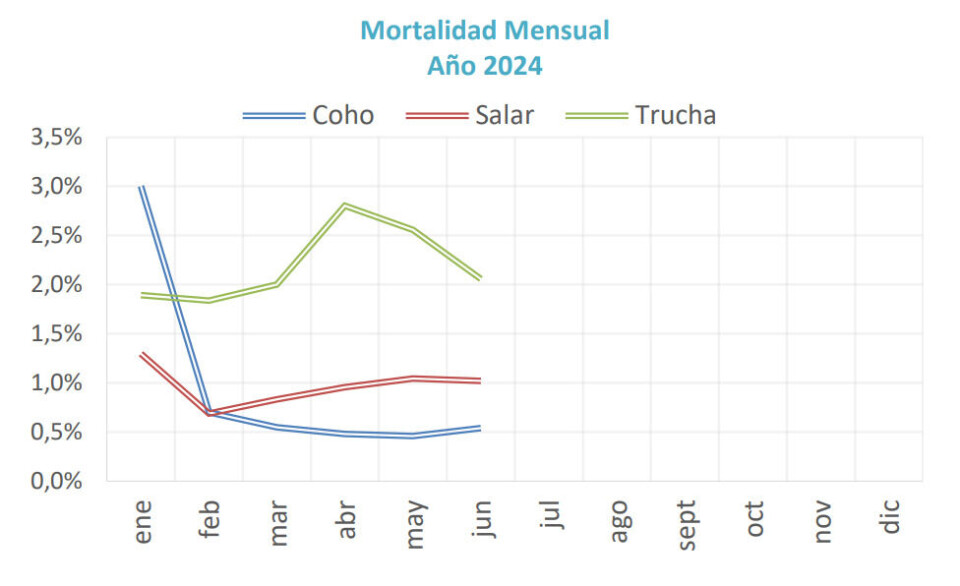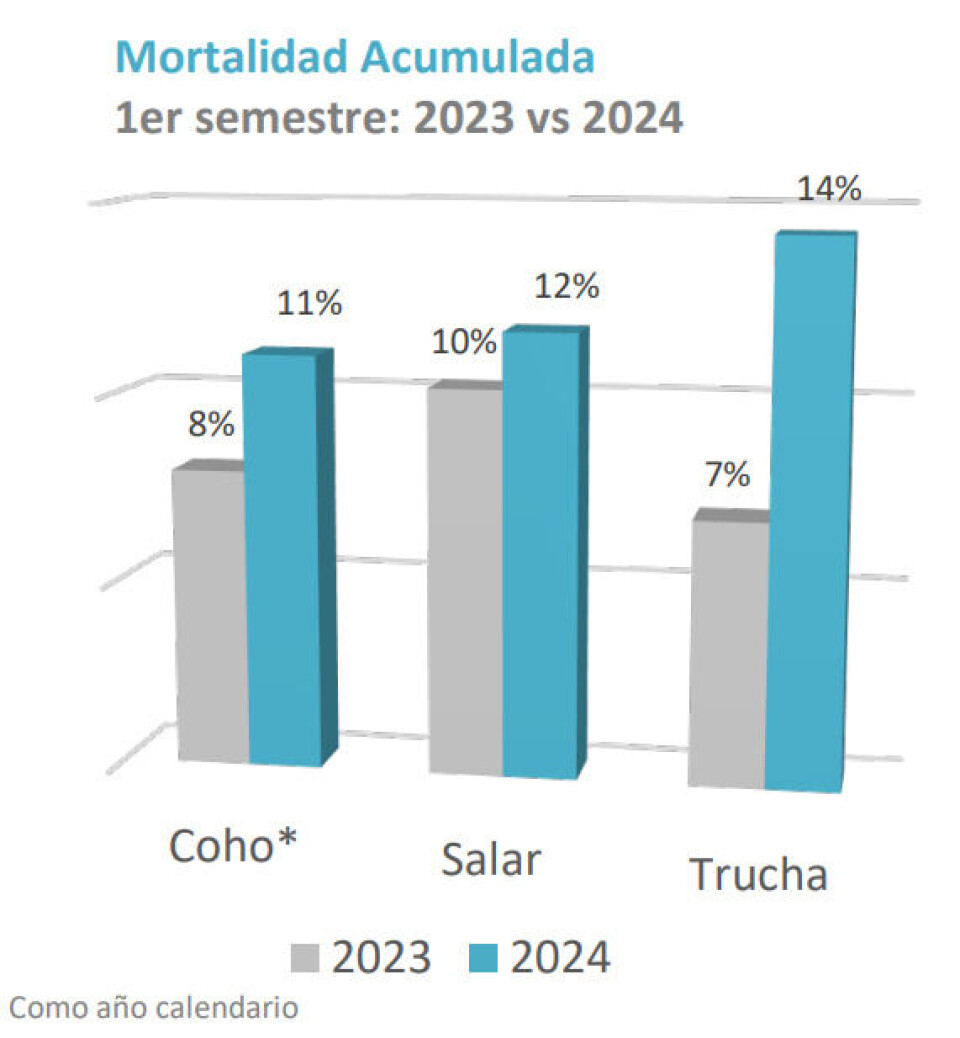
Chilean salmonid production hampered by increased mortality
Percentage of Atlantic and coho salmon and rainbow trout deaths have all increased year on year
Chile’s salmonid industry experienced an increase in fish mortality and a lower harvested biomass in the first half of this year compared to the same period in 2023, a report from industry analyst AquaBench shows.
An accumulated mortality of 11.4% was recorded by Atlantic salmon in closed groups in the first half of 2024, up from 10.3% in H1 2023.
In the case of rainbow trout, accumulated mortality in the first six months of this year doubled to 14.3% (H1 23: 7%), and the 2023 coho salmon season - which overlapped into 2024 - ended with an accumulated mortality of 8.2%, around a fifth higher than the previous season.
It total, 15.3 million salmonids died in marine sites in the first half of 2024, of which 10.7 million were Atlantic salmon, 2.3 million coho, and 2.2 million rainbow trout (figures don’t match total due to rounding up and down).

Disease and damage
Almost a quarter (23%) of the fish deaths from January to the end of June were caused by disease, 22% were due to mechanical damage, and 16% had environmental causes. 17% of the fish were classed as Eliminated.
The main diseases by species were:
- Atlantic Salmon: SRS (salmon rickettsial septicaemia) and tenacibaculosis (42% and 25% respectively);
- Coho salmon: jaundice and bacterial kidney disease (51% and 19% respectively);
- Rainbow trout: SRS and proliferative gill disease (52% and 19% respectively).
All percentages refer to the participation of each cause in the total number of infectious causes of each species.
Fewer but bigger smolts
Smolt stockings in Q2 of 2024 decreased by 8% on average compared to the same period of the previous year, reaching a total of 137.7 million smolts (H1 2023: 149.3 million) but the average weight of smolts at stocking increased.
Broken down by species, the decrease in the numbers of fish stocked was 9% in rainbow trout, 13% in coho salmon (season) and 3% in Atlantic salmon.
The average weight of smolts stocked in H1 was:
- Atlantic salmon 187g (up 5% compared to H1 23)
- Coho salmon, 337g (up 15%)
- Rainbow trout, 236g (up 12%)
At the end of the second quarter of 2024 there were 247.6 million farmed salmonids in the water, 5% fewer than at the end of Q2 2023. The number of rainbow trout had decreased by 25% to 11.9 million live fish, and the number of coho salmon was down by 13% to 62.2 million live fish. There was 0.2% drop in Atlantic salmon to 173.5 million live fish.
More Atlantic volume
The volume of live biomass at the end of June 2024 fell by 1% compared to the same time last year, totalling 546,387 tonnes for the three species. The volume of Atlantic salmon, comprising 78% of the total live biomass, increased by 2% to 426,006 tonnes, but the volumes of rainbow trout and coho were down by 7% and 26% respectively.
The total salmonid biomass harvested in H1 24 was 428,000 tonnes (whole fish equivalent), 9% lower than in H1 last year. The accumulated harvested volumes (WFE) for H1 were:
- Atlantic salmon: 316,789 tonnes
- Coho salmon: 73,828 tonnes
- Rainbow trout: 37,791 tonnes
These figures represent volume decreases of 53,261 tonnes for Atlantic salmon and 4,124 tonnes for coho compared to H1 23, although the trout harvest for H1 24 was 12,498 tonnes larger than in the same period last year.
The average harvest weight for H1 24 was 4.9 kg for Atlantic salmon, 4.7 kg for coho and 3.3 kg for rainbow trout.
























































